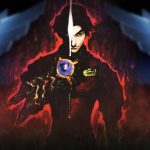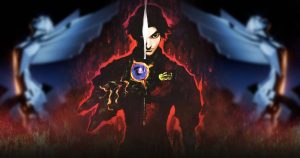
Astro Bot, released on PlayStation 5 on Sept. 6, is a wonderful platform game. It also serves as the kickoff for Sony’s celebration of 30 years of PlayStation (the original console debuted in Japan in December 1994). The game is saturated with PlayStation Easter eggs and fan service.
In particular, of the 300 collectible bots in the game, no fewer than 173 come dressed up as characters from the last three decades of PlayStation games. But developer Team Asobi cheekily doesn’t name them directly, giving each one a cluelike codename (“Aristocratic Archaeologist” for Lara Croft, “Raider Dude” for Nathan Drake) and a further hint-filled description. So browsing the collection is both a guessing game and a test of how deep your PlayStation fandom goes.
Lots of the bots are instantly recognizable. But some are pretty obscure. While the heroes from third-party publishers are all quite famous (Ryu, Ken, Solid Snake), Team Asobi has done a deep dive on Sony’s history as a game publisher, unearthing some weird and wonderful delights. During the PlayStation and PlayStation 2 eras in particular, Sony was a deep-pocketed and fearless publisher, unafraid of throwing all kinds of bizarre ideas at the wall to see what would stick, particularly in the Japanese market.
Astro Bot’s bot collection is a lovely tribute to that time, and to Team Asobi’s former home, Japan Studio — the legendary, innovative Sony studio that was dissolved in 2021. Here are some of the collection’s deepest cuts.
(Thanks to my Polygon colleagues — especially Nicole Carpenter and Michael McWhertor — for helping identify some of these, and to Ryan Gilliam for sharing images of his complete bot collection!)
It’s unsurprising that many of the deepest cuts in Astro Bot hail from the PS1 era, but here’s a PlayStation 3 game that’s sadly forgotten just over a decade on: 2013’s Puppeteer. This little guy is Kutaro, a boy changed into a puppet who, in a novel gameplay mechanic, can swap heads, as well as chop up the scenery with his scissors. This Japan Studio game was creative, but failed to find much of an audience — which, in the higher-stakes world of the PS3 era, was starting to be a problem for Sony. Its failure was a sign of the beginning of the end for the studio.
This creepy, angular purple head is called Polygon Man and, believe it or not, it briefly served as a marketing mascot for the original PlayStation in North America. Intended to be an edgy spokesperson aimed at teens who might be put off by the toylike PlayStation name, Polygon Man was considered a mistake by almost everyone, including the PlayStation head Ken Kutaragi. It was abandoned before the PS1 even launched.
Dark Chronicle, the 2003 PS2 role-playing game by Level-5 that was released as Dark Cloud 2 in North America, isn’t as obscure as some of the other references on this list, but the way this bot is named and presented makes its identity particularly hard to guess. It’s Dark Chronicle’s protagonist Maximilian, or Max, and he’s brooding over some toy houses because the game has a city-building mechanic built into it, along with the randomized dungeons it inherits from spiritual predecessor Dark Cloud.
Boku no Natsuyasumi (usually translated as My Summer Vacation) is a Japan-only series of open-ended, nostalgic life sims about being a kid on summer break in 1975. This bug-catching boy is the protagonist, Boku. In the first game, released on PlayStation in 2000, and its three sequels, there are no objectives as such; aside from daily routines, it’s up to you to decide how Boku spends his 31 days of free time in the countryside. Natsu-Mon: 20th Century Summer Kid, a spiritual sequel by original director Kaz Ayabe, was recently released on Nintendo Switch and Windows PC.
One of the most unusual games ever released for PS1 — which is really saying something — is Vib-Ribbon. It’s an ultraminimalist, black-and-white take on the then-popular rhythm game genre, in which a scratchily animated, line-drawn rabbit called Vibri skips along a single line, navigating abstract hazards in time with the chirpy electro music. The twist was that you could insert your own music CDs into the PlayStation and have the game generate levels to match the tunes.
Unhinged minigame compilations were a thing on the original PlayStation; anyone remember Bishi Bashi Special? One of the most out-there ones was Incredible Crisis, which follows four members of a working-class Japanese family just trying to get home for grandma’s birthday in the face of all kinds of terrifying and incongruous events — bank robberies, statues crashing into offices, teddy bear kaiju, the works — without busting their stress meters. This guy is the dad, Taneo.
This ax-wielding sheep is Lammy, the heroine of Um Jammer Lammy, a rocking spinoff of the better-known rap rhythm game PaRappa the Rapper (also featured in Astro Bot). Although it doesn’t quite have PaRappa’s lyrical charm, Um Jammer Lammy goes incredibly hard musically, conceptually, and in its frantic gameplay.
This elfin adventurer is Alundra, star of an eponymous 1998 game for the PS1. Developed by Matrix Software and published in Japan by Sony itself, it was an attempt to give the PlayStation a Legend of Zelda-style fantasy adventure, with the interesting gimmick that Alundra could enter the dreams of the local townsfolk. But its old-school 2D gameplay was comprehensively overshadowed by Zelda’s move into 3D with Ocarina of Time that same year, and it’s now largely forgotten.
This blockhead is a reference to Intelligent Qube, a 1997 Sony-published PS1 puzzle game in which a tiny man runs around on platforms trying not to get crushed by monolithic metal cubes. There’s something eerie and oppressive about the frail little guy scampering about inside this hostile, monochromatic void, at the mercy of the basic polygonal slabs, that could only have been invented during the wild early days of 3D gaming.
This dude is Arc, hero of the tactical RPG Arc the Lad, a Japan-only release on PS1 in 1995. The game was popular enough to spawn several sequels well into the PS2 era, as well as manga and anime. But the first three games weren’t published in the West, which more or less doomed it to obscurity on these shores.
Before Sony permitted him to define racing games for a generation with his ultrarealist motorsport magnum opus Gran Turismo, Kazunori Yamauchi was asked to earn his stripes by knocking out a Mario Kart clone at Japan Studio. That game was 1994’s Motor Toon Grand Prix (a Japan-only release, although a sequel did come out in the U.S.). Obviously, Yamauchi totally overengineered it, building complex handling physics with fully simulated suspensions for the cartoon karts.
You’d be forgiven for being stumped by this strange glowing dog character, even though it hails from a very recent release. It’s the player character of Humanity, a puzzle-platformer/art piece from 2023 in which your celestial hound guides enormous throngs of people through treacherous, abstract levels (which are somewhat reminiscent of Intelligent Qube, actually).
This cute lil’ Pomeranian is, in fact, the cover star of a particularly savage PS3-era indie game developed by Crispy’s! and incubated by Japan Studio: Tokyo Jungle. The 2012 game is about the survival of the fittest in a ruined Tokyo with no human inhabitants — just animals eating each other, fucking, and evolving. The Pomeranian is one of two starter animal choices (the other is a deer; surviving as an herbivore is even harder).
Every so often, you come across a game that requires no more explanation than its title, and one example is the 2002 PS2 release Mister Mosquito, in which you… play as a mosquito. You live in a house with a family of life-sized humans and need to suck their blood to survive. That’s it. That’s the game.
This is Robbit, the robotic rabbit protagonist of the extremely early PlayStation release Jumping Flash!, a 1995 launch game for the console in Europe and North America. Jumping Flash! was a bold, head-spinning attempt to do platforming in 3D using a first-person perspective. Super Mario 64 would consign this approach to history a year later, but the game was still a real trailblazer.






























